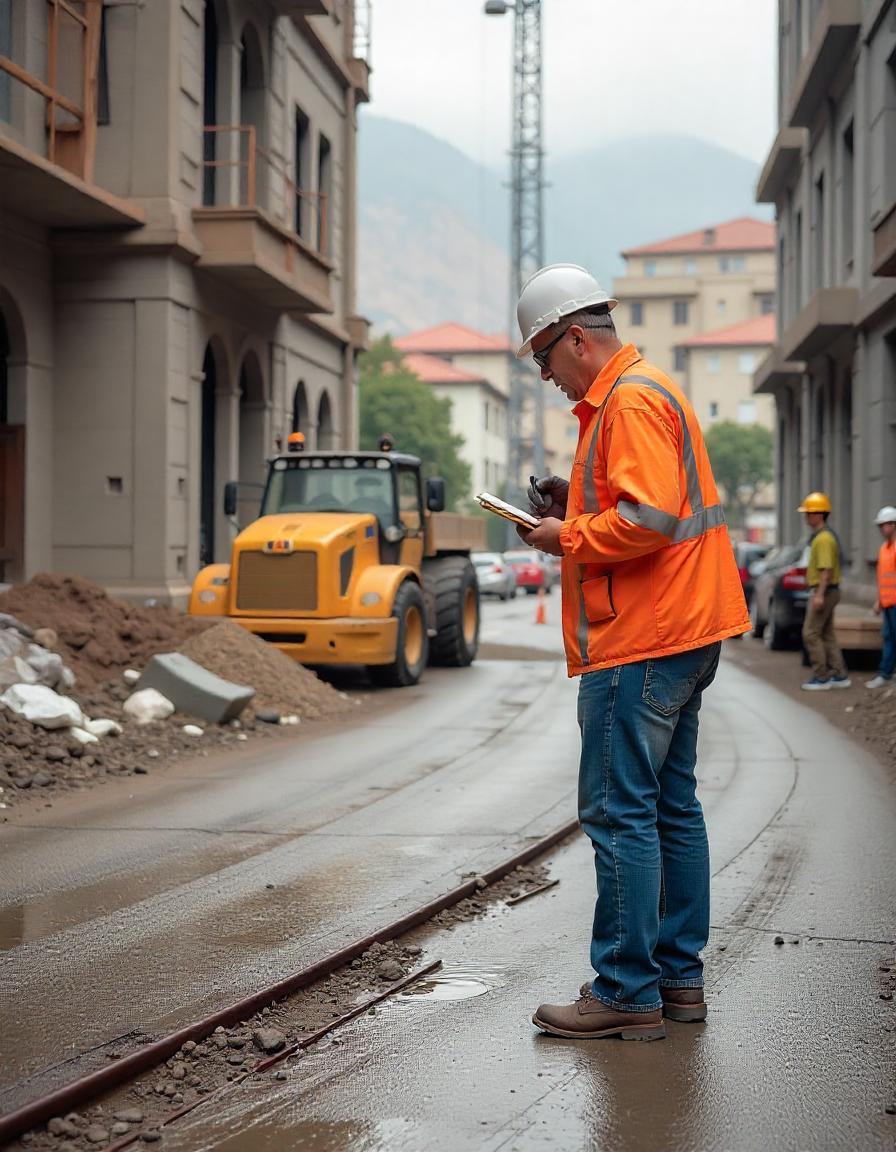
When you think about construction site safety, certain high-profile risks likely come to mind: falling from heights, being struck by moving equipment, or being electrocuted. These dangers are real and well-known. But beneath the surface lies a host of less obvious hazards which are often overlooked and underestimated, that can lead to injuries, lost productivity, project delays, and even fatalities.
In this comprehensive blog post, we shine a spotlight on those hidden dangers that often go unnoticed amid the dust and noise. Whether you're a safety officer, site manager, contractor, or worker, being aware of these hazards can make a major difference in preventing the next incident.
1. Inadequate Housekeeping: The Foundation of Chaos
Good housekeeping on a construction site isn't about aesthetics—it's about safety.
Key Risks:
-
Slips, trips, and falls caused by scattered debris or tangled cables.
-
Blocked access to emergency exits or firefighting equipment.
-
Increased fire risk due to accumulated flammable materials.
Best Practices:
-
Set a site-wide housekeeping schedule.
-
Assign daily cleanup responsibilities to specific teams.
-
Use color-coded bins and materials storage systems.
-
Mark access routes with reflective tape or signage.
2. Temporary Fixes Becoming Permanent Hazards
How often have you heard, “Let’s just do this for now”? Temporary scaffolding, makeshift access ladders, or rigged electrical lines might seem harmless until they become the long-term solution.
Real Dangers:
-
Structural failure of makeshift platforms.
-
Overloading of temporary supports.
-
Legal consequences and liability after an incident.
Preventive Measures:
-
Avoid “band-aid” solutions and push for proper repairs.
-
Conduct regular reviews of temporary installations.
-
Ensure temporary works are signed off by competent persons.
3. Improperly Stored Materials
Materials are often stored wherever there is space, especially on tight job sites. But poor storage practices can create multiple hazards.
Consequences:
-
Tripping hazards and limited mobility.
-
Material collapse or rolling hazards.
-
Fire hazards when flammable items are stored improperly.
Mitigation:
-
Use racking systems and material laydown plans.
-
Keep heavy materials low to the ground to prevent toppling.
-
Store flammables in designated, ventilated containers.
4. Overhead Work with No Exclusion Zones
Working overhead without creating exclusion zones below is a recipe for disaster.
Risks:
-
Workers being struck by dropped tools or materials.
-
Distraction or panic leading to secondary injuries.
Controls:
-
Establish exclusion zones using barrier tape or fencing.
-
Use tool lanyards and secured storage platforms.
-
Schedule overhead work during low-traffic times.
5. Uncontrolled Noise Levels
Noise is more than just an annoyance—it’s a hazard that causes both short-term distraction and long-term damage.
Hidden Dangers:
-
Workers missing verbal warnings or alarms.
-
Hearing loss developing over time.
-
Increased stress and fatigue from constant loud environments.
Solutions:
-
Conduct noise monitoring with dosimeters.
-
Use engineering controls like mufflers and sound barriers.
-
Rotate workers and provide hearing protection rated for the environment.
6. Equipment Blind Spots and Worker Positioning
Heavy equipment like bulldozers, cranes, and dump trucks have enormous blind spots.
What Goes Wrong:
-
Spotters not being used or being inattentive.
-
Workers assuming operators can see them.
-
Equipment reversing into unmarked pedestrian areas.
How to Fix It:
-
Enforce high-visibility clothing and hardhat rules.
-
Install cameras and proximity alarms on machinery.
-
Train workers in “No-Zone” awareness.
7. Exposure to Hazardous Substances
Not all chemical hazards are obvious. Dust, fumes, vapors, and liquids can be silently harmful.
Common Sources:
-
Silica dust from cutting or grinding concrete.
-
Asbestos in old structures.
-
Solvent fumes from paints, sealants, or adhesives.
Protection Strategy:
-
Use wet cutting methods and proper ventilation.
-
Require respiratory protection and fit-testing.
-
Ensure proper labeling and SDS access on site.
8. Poorly Maintained Access Equipment
Ladders, scaffolds, and MEWPs are essential tools—but when not maintained, they become life-threatening.
Typical Issues:
-
Missing rungs or guardrails.
-
Unstable base or uneven load distribution.
-
Using ladders without inspection tags.
Safety Actions:
-
Perform daily pre-use inspections.
-
Ensure only trained personnel set up and use access equipment.
-
Tag out defective ladders and scaffolds immediately.
9. Fatigue and Long Working Hours
Fatigue is a silent killer. Tired workers are more prone to mistakes, slow reactions, and misjudgment.
Hidden Impact:
-
Microsleeps while operating equipment.
-
Short tempers, leading to safety rule violations.
-
Lowered risk perception.
What You Can Do:
-
Rotate shifts to prevent overwork.
-
Encourage proper hydration, nutrition, and rest.
-
Promote a culture where breaks are not only accepted but expected.
10. Complacency and “Shortcut” Culture
The longer a worker has done the job, the more likely they are to feel confident taking shortcuts—skipping steps that feel “unnecessary.”
Risk Examples:
-
Not wearing PPE because “nothing ever happens.”
-
Ignoring near-misses because “it wasn’t serious.”
-
Skipping toolbox talks or sign-ins.
Changing the Culture:
-
Highlight stories and data on real incidents.
-
Reward safe behavior, not just production.
-
Engage experienced workers as safety champions.
11. Environmental Factors Often Ignored
Extreme weather, poor drainage, and environmental degradation can all introduce unpredictable hazards.
Issues:
-
Heatstroke or hypothermia depending on conditions.
-
Lightning strikes in exposed areas.
-
Water accumulation leading to slips or trench collapses.
Prevention:
-
Monitor weather forecasts and adjust work plans.
-
Provide shade, hydration, or warming shelters as needed.
-
Grade and drain the site appropriately.
12. Lack of Emergency Preparedness
It’s not just about having a first aid box. It's about knowing what to do when everything goes wrong.
Common Gaps:
-
Fire exits blocked or unmarked.
-
Workers unfamiliar with evacuation plans.
-
Lack of rescue procedures for confined spaces or heights.
What to Implement:
-
Conduct regular drills (fire, fall, electrical shock).
-
Maintain updated site-specific emergency plans.
-
Clearly post muster points and emergency contact info.
Conclusion: Look Beyond the Obvious
Construction safety is more than fall protection and hard hats. True safety comes from identifying the invisible threats, the complacent habits, and the "that’ll do" fixes that slowly build into serious risks.
An HSE-conscious site is not just a safer place—it’s a more productive, profitable, and responsible place to work.
What Can You Do Today?
-
Conduct a “Hazards We Might Be Missing” walkthrough.
-
Ask your team what near-misses they’ve seen recently.
-
Review all temporary solutions and assess if they’ve become “permanent risks.”
Your Construction Site Deserves Better Than Average Safety. Be Proactive, Be Thorough, Be Vigilant.
 Richard Mills
Richard Mills